Plywood is widely used in construction, but when exposed to water, it swells, warps, and eventually fails. So how can we protect it?
To waterproof plywood, apply epoxy, oil-based sealers, paint, waterproof membranes, or polyurethane depending on exposure and usage scenario.
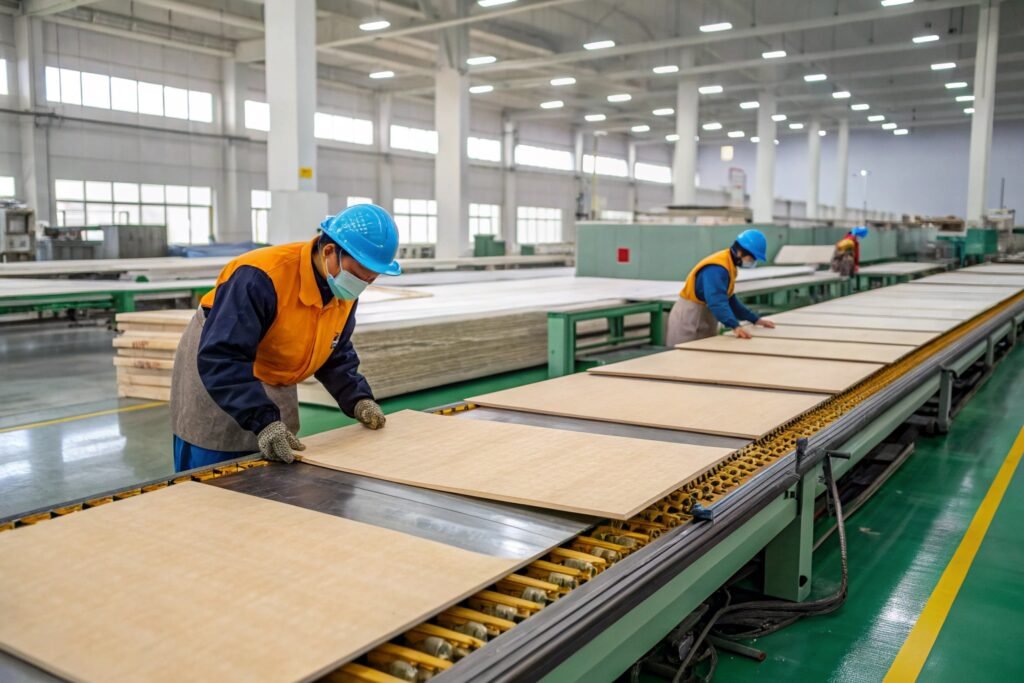
Untreated plywood soaks up moisture through its grain and edges. This leads to softening, delamination, and fungus over time. That’s why waterproofing isn’t optional—it’s essential in flooring, outdoor walls, roof decking, bathrooms, and marine applications. Here are five proven waterproofing methods, along with their benefits, limitations, and best-fit usage environments.
Epoxy Resin Coating
Epoxy is the most durable waterproofing method for plywood, forming a hard, chemical-resistant barrier that blocks all moisture.
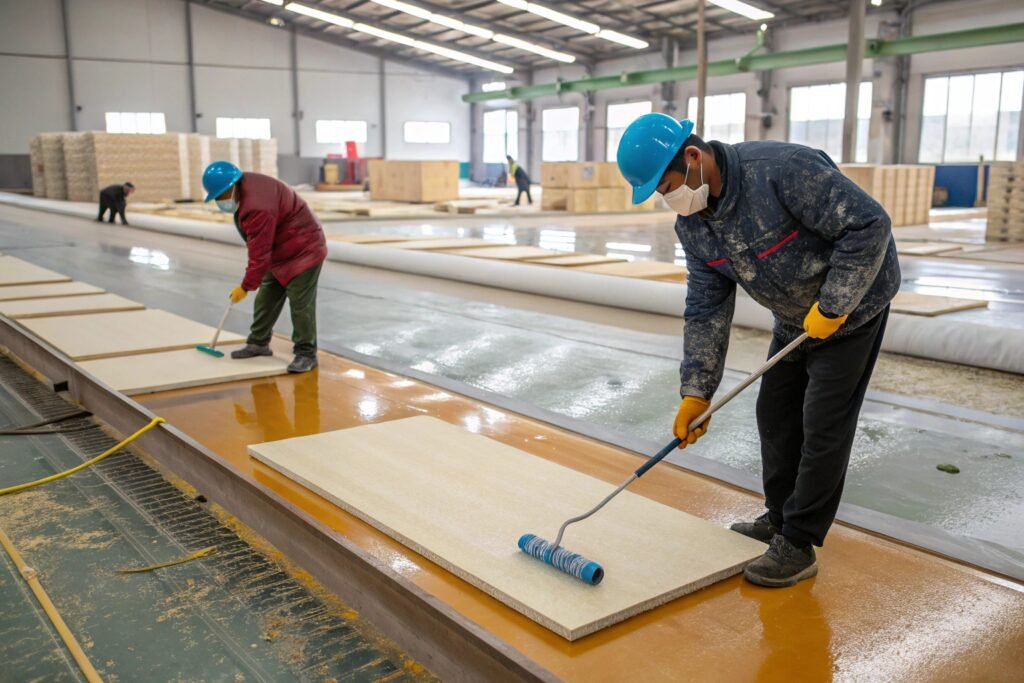
Epoxy resin forms a plastic-like shell over the surface. It bonds to the wood fibers and seals all pores. Once cured, it is tough, UV-resistant (if topcoated), and impervious to water. It’s widely used in boatbuilding, wet rooms, and exterior furniture. Application requires a clean, dry surface. It must be applied in thin layers with a brush or roller and left to cure fully. For maximum protection, a topcoat like polyurethane can be added to resist yellowing. The downside? It’s more expensive and requires more skill than other methods.
Oil-Based Sealers
Boiled linseed oil and tung oil offer simple, natural waterproofing that enhances wood grain while adding moderate moisture resistance.
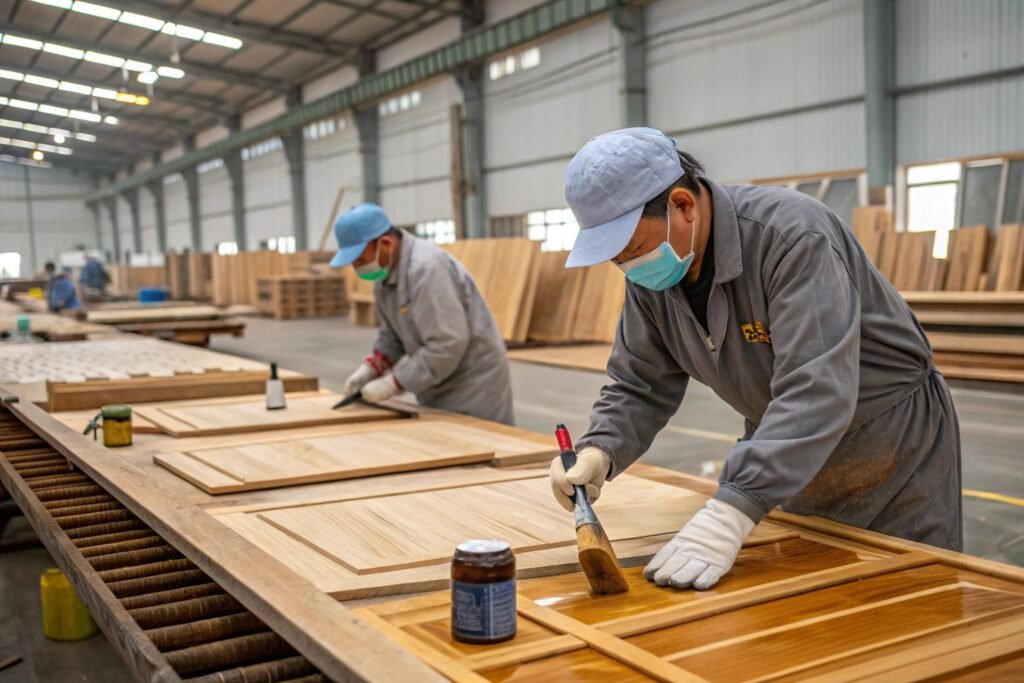
These oils soak into the wood and harden over time, creating a flexible, breathable finish. They’re ideal for interior paneling, decorative plywood, and lightly exposed outdoor projects like soffits or patio ceilings. Application is simple—rub in with a cloth or brush, let dry, and repeat 2–3 times. While not 100% waterproof, they help reduce water absorption. Periodic reapplication is needed to maintain performance. Avoid raw linseed oil as it never fully dries.
Waterproof Paint or Primer
Exterior-grade paint or primer creates a surface-level water barrier, suitable for moderate protection in sheltered outdoor use.
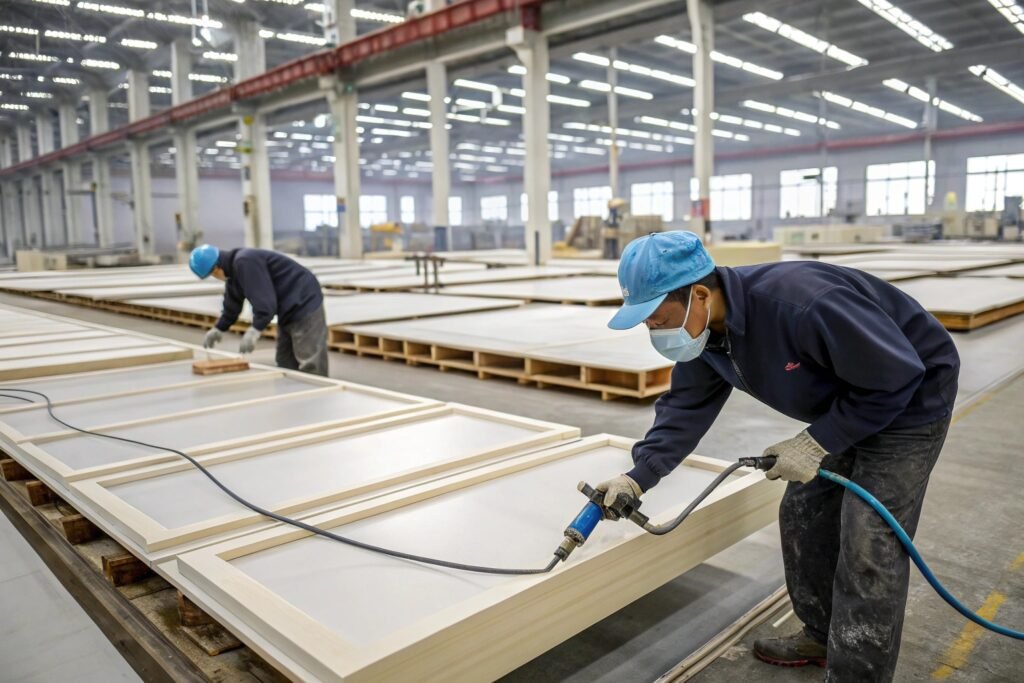
Acrylic latex or enamel paint works well for painted plywood walls or outdoor structures like sheds and signs. For better results, apply a waterproof primer first, then finish with at least two coats of paint. Always seal edges and corners where water could seep in. While this approach is effective in light to medium rain exposure, it can peel over time if not maintained. It’s affordable and easy to reapply, making it practical for DIY or short-term builds.
Liquid Rubber or Waterproof Membranes
These roll-on membranes form a flexible, thick, rubberized layer that keeps water out—even under standing water.
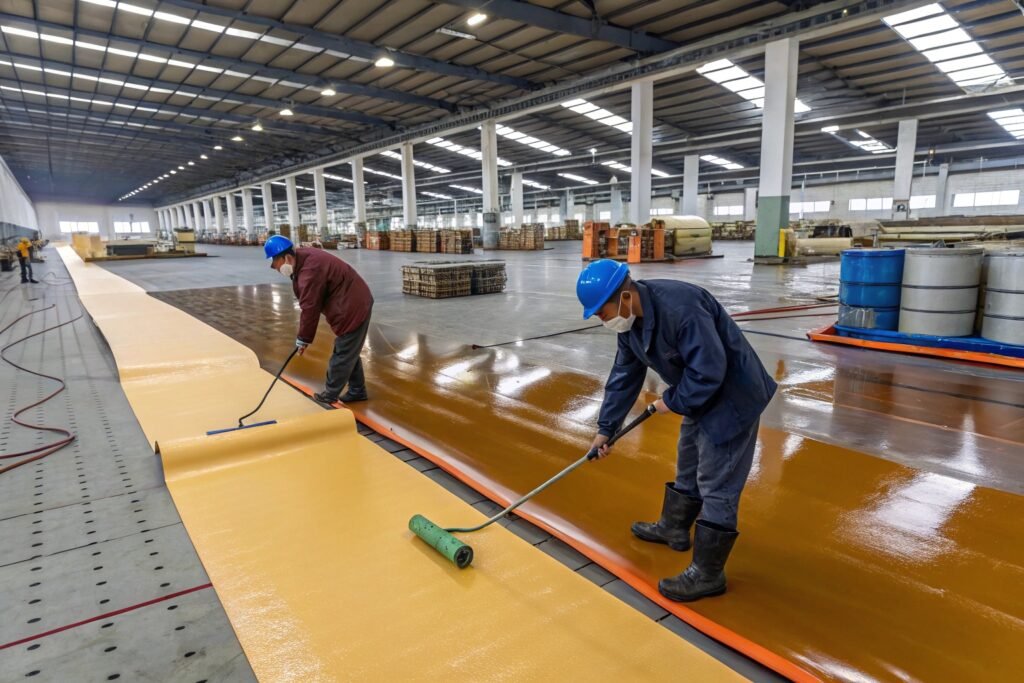
Liquid rubber is applied with a roller or sprayer and cures into a tough, seamless layer. It adheres well to plywood and flexes with wood movement, making it ideal for flat roofs, subfloors, or planter boxes. Some formulas are UV-stable, others require top protection. Unlike thin sealers, this membrane is much thicker and forms a true waterproof envelope. It is more expensive than paint but cheaper and easier than epoxy in large areas.
Polyurethane or Spar Urethane
Polyurethane offers a clear, hard finish that resists moisture, chemicals, and abrasion—ideal for plywood furniture and cabinetry.

Both oil- and water-based versions are available. Oil-based poly lasts longer but takes longer to dry and yellows over time. Water-based poly dries faster, stays clear, and is easier to clean up. For exterior use, spar urethane (a marine-grade version) performs best—it expands and contracts with temperature changes and blocks UV rays. Polyurethane is best for indoor floors, kitchen cabinetry, tabletops, and lightly exposed outdoor applications.
What is the best way to waterproof plywood?
Epoxy resin is the best way to waterproof plywood because it creates a durable, fully sealed surface that resists long-term water exposure.
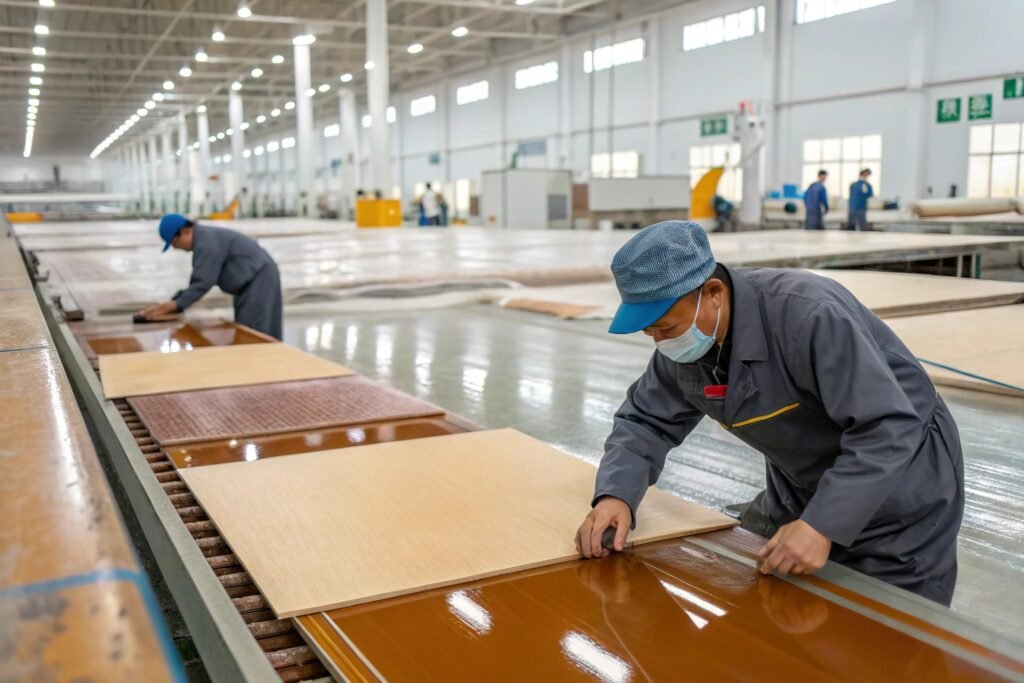
If your plywood will be in frequent contact with water—like on a boat, balcony floor, or bathroom wall—nothing beats a well-applied epoxy coating. It locks out all moisture and provides years of protection. For best results, prepare the surface properly, apply thin even coats, and add a UV-protective top layer if the plywood will be in sunlight.
What kind of oil is used to waterproof plywood?
Boiled linseed oil and tung oil are the most common oils used to waterproof plywood, providing moderate moisture protection and a natural look.
Boiled linseed oil is widely used for sealing plywood in semi-protected areas. It soaks deep and dries hard, darkening the wood slightly. Tung oil dries clearer and is more water-resistant but costs more. Both are safe, easy to apply, and suitable for decorative or semi-exposed uses. However, they don’t offer complete waterproofing and need reapplication every 1–2 years.
How is waterproof plywood made?
Waterproof plywood is made with water-resistant glue, compact veneers, and precise bonding to prevent moisture from penetrating or breaking down the layers.
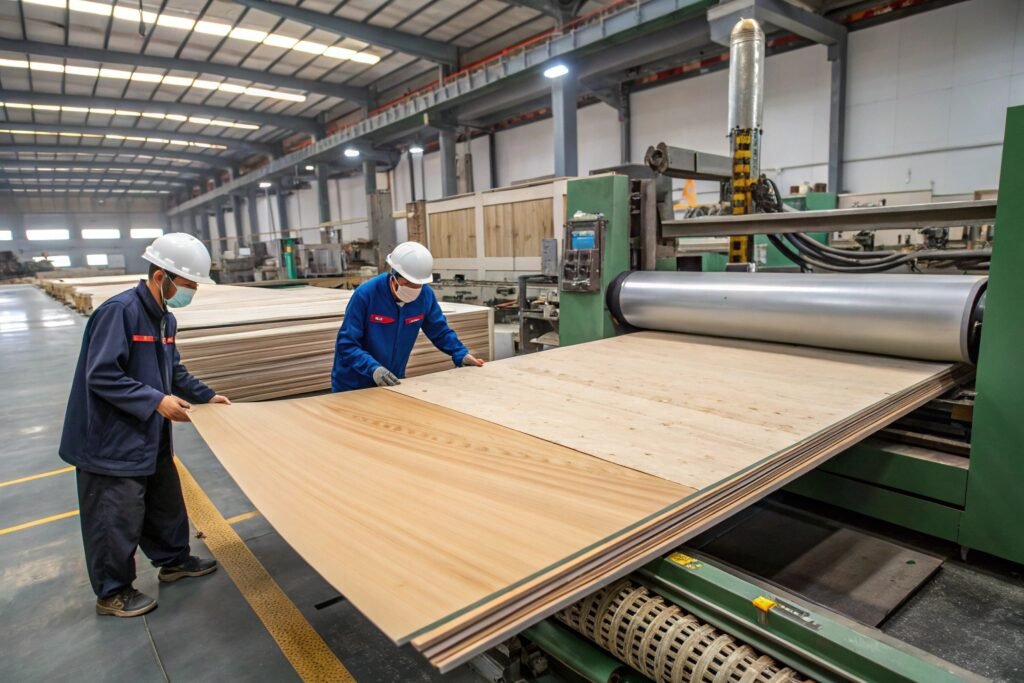
During production, waterproof plywood is assembled using WBP (Weather and Boil Proof) adhesives that resist soaking and boiling. Manufacturers choose hardwood veneers with minimal gaps, which are then pressed under high temperature and pressure. This results in a dense, void-free sheet that can survive long periods in wet environments. Standards like BS 1088 or IS 710 define marine-grade plywood performance. This internal construction, combined with surface coatings, gives it outstanding resistance in the harshest conditions.
Conclusion
For reliable plywood waterproofing, epoxy gives the strongest protection, while marine plywood delivers long-term resistance from the inside out. Choose the right method based on climate, use, and budget.
